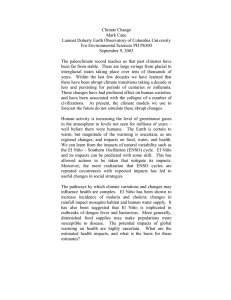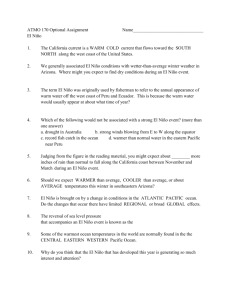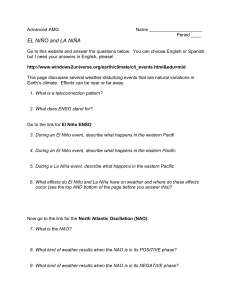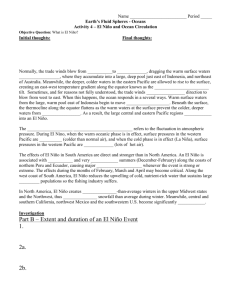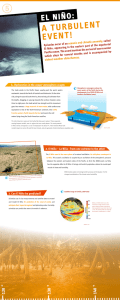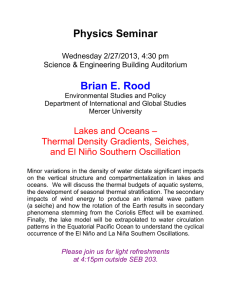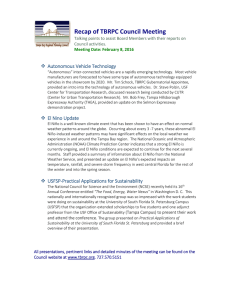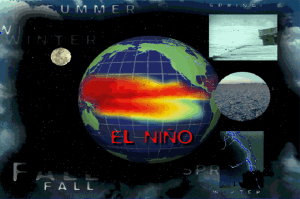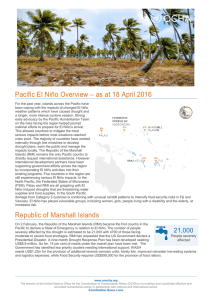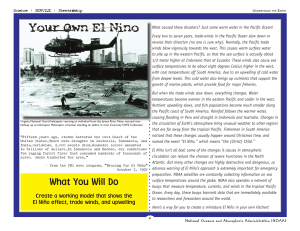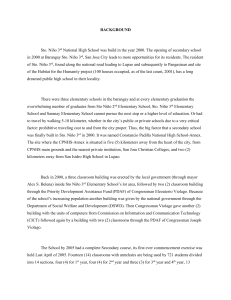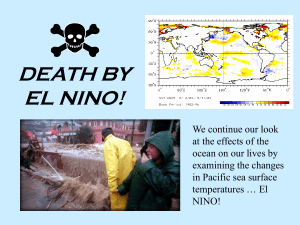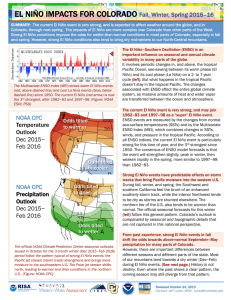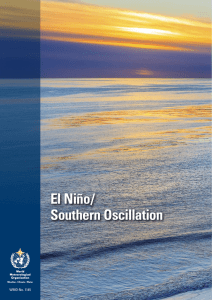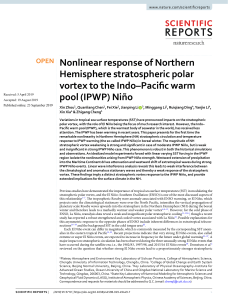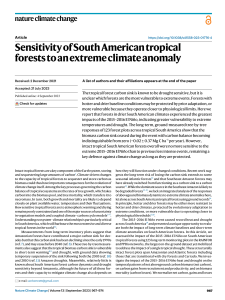Tree Rings Tell a 1,100-Year History of El Niño
advertisement
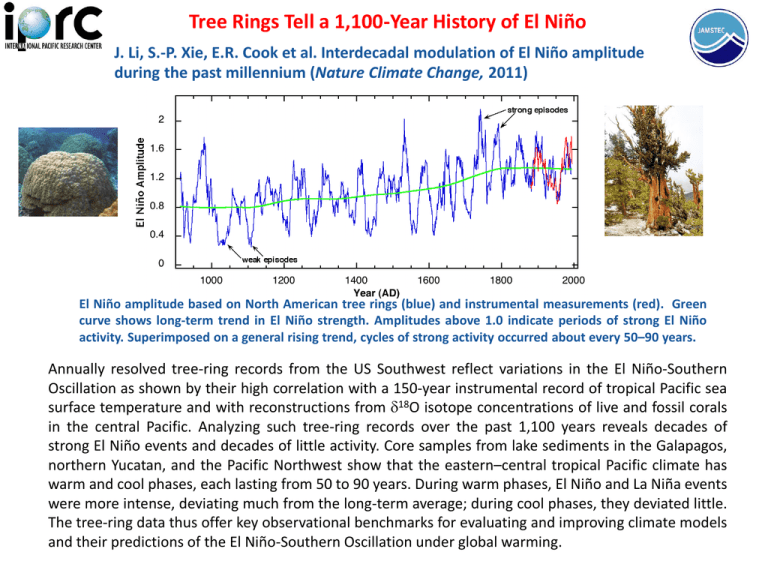
Tree Rings Tell a 1,100-Year History of El Niño J. Li, S.-P. Xie, E.R. Cook et al. Interdecadal modulation of El Niño amplitude during the past millennium (Nature Climate Change, 2011) El Niño amplitude based on North American tree rings (blue) and instrumental measurements (red). Green curve shows long-term trend in El Niño strength. Amplitudes above 1.0 indicate periods of strong El Niño activity. Superimposed on a general rising trend, cycles of strong activity occurred about every 50–90 years. Annually resolved tree-ring records from the US Southwest reflect variations in the El Niño-Southern Oscillation as shown by their high correlation with a 150-year instrumental record of tropical Pacific sea surface temperature and with reconstructions from 18O isotope concentrations of live and fossil corals in the central Pacific. Analyzing such tree-ring records over the past 1,100 years reveals decades of strong El Niño events and decades of little activity. Core samples from lake sediments in the Galapagos, northern Yucatan, and the Pacific Northwest show that the eastern–central tropical Pacific climate has warm and cool phases, each lasting from 50 to 90 years. During warm phases, El Niño and La Niña events were more intense, deviating much from the long-term average; during cool phases, they deviated little. The tree-ring data thus offer key observational benchmarks for evaluating and improving climate models and their predictions of the El Niño-Southern Oscillation under global warming.

